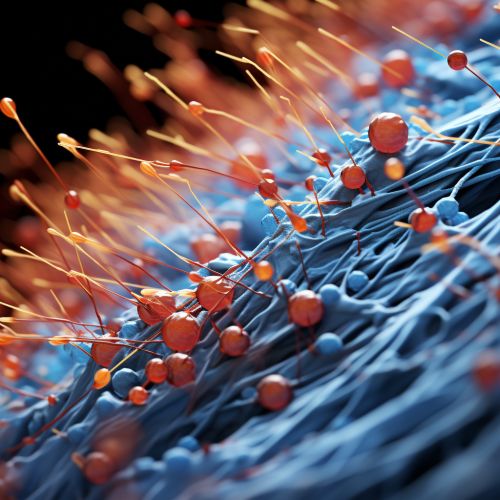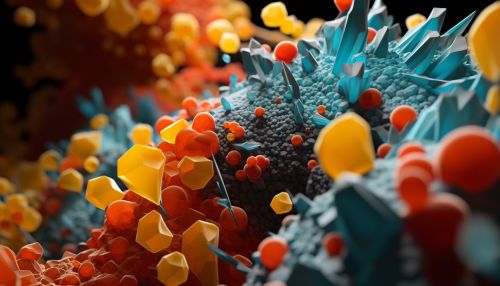Protein aggregation
Introduction
Protein aggregation is a biological phenomenon where misfolded proteins accumulate and form insoluble complexes known as aggregates. This process is implicated in a variety of diseases, including neurodegenerative disorders such as Alzheimer's, Parkinson's, and Huntington's. Protein aggregation can occur intracellularly or extracellularly, and can affect various biological functions.


Biochemical Mechanisms of Protein Aggregation
Protein aggregation is a multi-step process that begins with protein misfolding. Proteins are complex molecules that must fold into specific three-dimensional structures to function properly. Misfolded proteins can expose hydrophobic regions that are normally buried within the protein structure, leading to aggregation. This process is facilitated by molecular chaperones, which are proteins that assist in the folding and unfolding of other proteins.
The formation of protein aggregates involves several stages. Initially, misfolded proteins form small, soluble aggregates known as oligomers. These oligomers can then further aggregate to form larger, insoluble structures called fibrils. Fibrils can subsequently associate to form even larger aggregates.
Role of Molecular Chaperones
Molecular chaperones play a crucial role in preventing protein aggregation. They recognize and bind to misfolded proteins, facilitating their refolding or degradation. However, under conditions of cellular stress, the capacity of the chaperone system can be overwhelmed, leading to an accumulation of misfolded proteins and subsequent aggregation.
There are several types of molecular chaperones, including heat shock proteins (HSPs), which are upregulated in response to cellular stress. HSPs can recognize and bind to misfolded proteins, preventing their aggregation. Other types of chaperones include the Hsp70 and Hsp90 families, which are involved in protein folding and degradation.
Protein Aggregation and Disease
Protein aggregation is implicated in a variety of diseases, particularly neurodegenerative disorders. In these diseases, specific proteins misfold and aggregate, leading to neuronal dysfunction and death.
In Alzheimer's disease, the protein beta-amyloid aggregates to form plaques in the brain. Similarly, in Parkinson's disease, the protein alpha-synuclein forms aggregates known as Lewy bodies. In Huntington's disease, the huntingtin protein aggregates, leading to neuronal death.
Protein aggregation is also implicated in other diseases, such as type 2 diabetes, where the protein islet amyloid polypeptide aggregates in the pancreas, and systemic amyloidosis, where various proteins aggregate in different organs.
Therapeutic Approaches
Several therapeutic approaches are being explored to prevent or reverse protein aggregation. These include the use of small molecules that can bind to misfolded proteins and prevent their aggregation, and the development of drugs that can enhance the capacity of the chaperone system.
Another approach is the use of antibodies that can recognize and bind to aggregates, promoting their clearance by the immune system. This approach is being explored in the treatment of Alzheimer's disease, with several antibodies currently in clinical trials.
